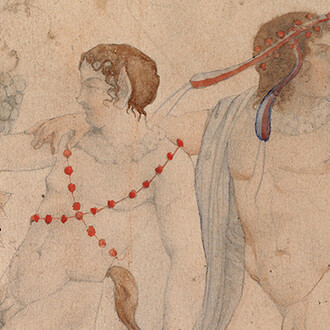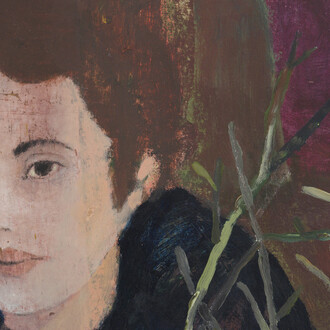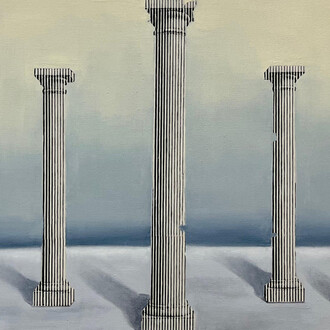Dennis Buck (b. 1989 in Ulm, DE) presents his first solo exhibition, Amateur poems, at Ruttkowski;68 in Paris.
In his new series consisting of large-scale paintings and small-scale drawings, Buck rejects pure text in favor of embodied language— poems that emerge not from an institutionalized linguistic system, but rather from an assemblage of personal memories and residue of quotidian experiences that are not as trivial as they might first appear. For his canvases, the artists uses sourced fabrics that he sun-bleached during a residency in Mallorca, utilizing a slow process that has become more intricate and technical throughout the years. A series of drawings serves as studies that Buck completed prior to painting.
The works on view mark a significant shift in the artist’s practice. Previously, Buck worked with silicone both as surface and substance—mounting sculptural forms onto canvas or constructing entire works from silicone alone, subverting a painting’s usual flatness and transforming it into a three-dimensional, object-esque work. While he still challenges the notion of painting as a flat pictorial field, Buck, in his new exhibition, has now turned to oil paint, which he uses in thick layers to mimic the familiar texture of silicone. Almost akin to an optical illusion, the grid-like stripes of oil paint are simultaneously tactile and elusive, reminiscent of a slippery border between image and object. At times, he entirely disintegrates the structure of the grid, a recurring visual element in his work. In her seminal essay Grids (1979), art theorist and critic Rosalind Krauss argues that the grid is not only a formal structure but a symbolic form that dominates modernist painting and enforces its self-referentiality and sublime dimensions. The grid can even become a site of transcendence, organizing chaos and gesturing toward metaphysical meaning while being resolutely abstract and non-representational. Buck’s paintings oscillate between asserting and disrupting the grid, destabilizing both its formal function (flattening and order) and its symbolic one (transcendence and purity).
“Too much reality,” “I can not remember him,” and “the liar has dreams” are a few fragmented extracts of Buck’s poems that serve as titles for each painting. The poems develop narratives that escape traditional language, emerging instead through form, material, and gesture. Thereby, Buck’s work channels French phenomenologist Maurice Merleau-Ponty’s notion that meaning is not always clearly spoken or written, but sensed through perception, which, in this case, consists of a material and associative perception. At the same time, the artist’s interest in language that resists institutional meaning also aligns with his destabilization of the grid. As he moves away from structured syntax in his poetry, he also dismantles the grid’s rigid logic in his visual field—creating a sort of poetic disobedience in both material and form.














